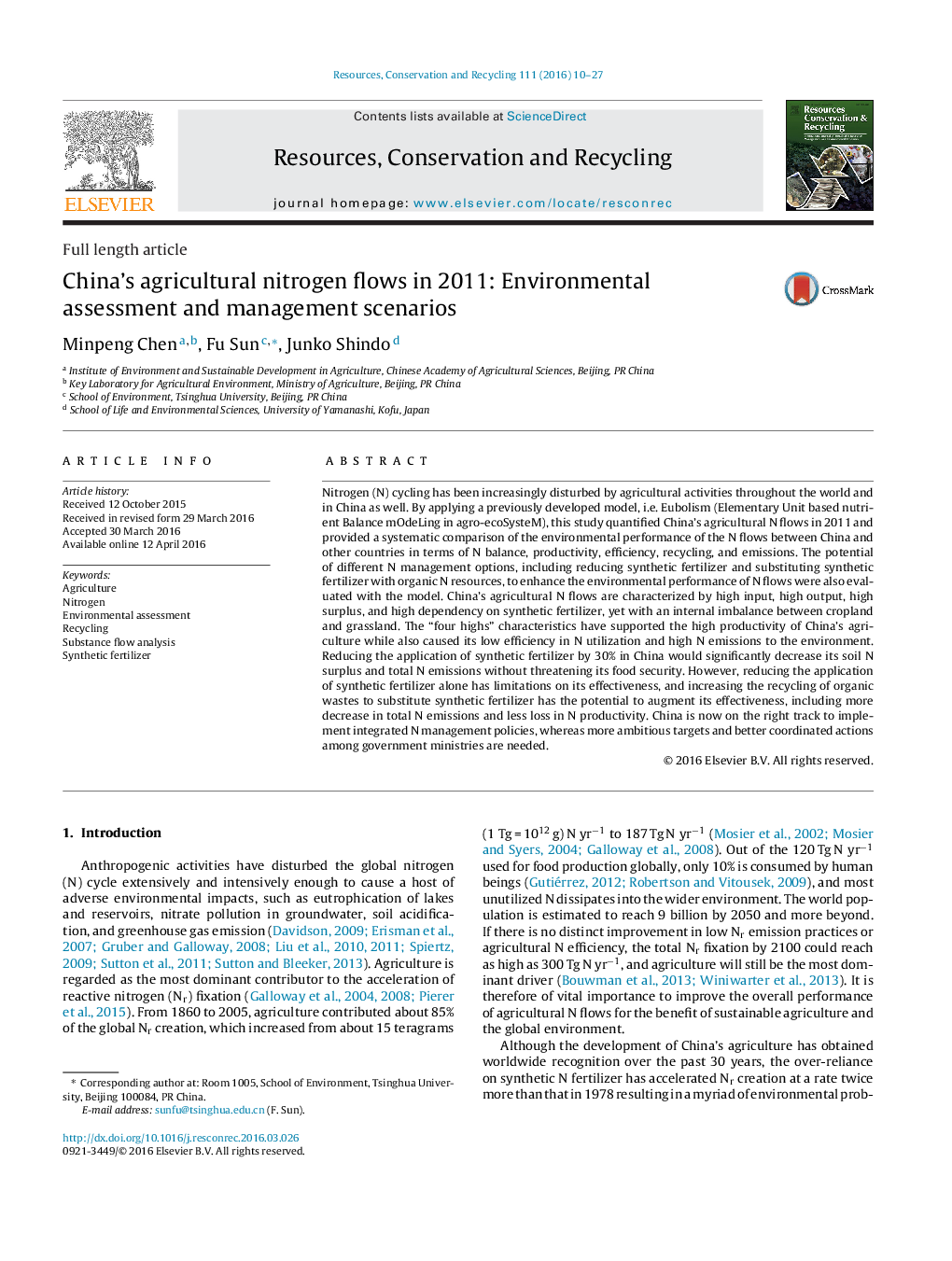| Article ID | Journal | Published Year | Pages | File Type |
|---|---|---|---|---|
| 1062692 | Resources, Conservation and Recycling | 2016 | 18 Pages |
•China’s agricultural nitrogen (N) flows were quantified with the Eubolism model.•High input, output, surplus and dependency on synthetic N fertilizer were observed.•“Four highs” resulted in high N productivity, low N efficiency and high N emissions.•Reducing synthetic fertilizer by 30% ensures food supply and environmental benefits.•Recycling organic wastes augments the effectiveness of reducing synthetic fertilizer.
Nitrogen (N) cycling has been increasingly disturbed by agricultural activities throughout the world and in China as well. By applying a previously developed model, i.e. Eubolism (Elementary Unit based nutrient Balance mOdeLing in agro-ecoSysteM), this study quantified China’s agricultural N flows in 2011 and provided a systematic comparison of the environmental performance of the N flows between China and other countries in terms of N balance, productivity, efficiency, recycling, and emissions. The potential of different N management options, including reducing synthetic fertilizer and substituting synthetic fertilizer with organic N resources, to enhance the environmental performance of N flows were also evaluated with the model. China’s agricultural N flows are characterized by high input, high output, high surplus, and high dependency on synthetic fertilizer, yet with an internal imbalance between cropland and grassland. The “four highs” characteristics have supported the high productivity of China’s agriculture while also caused its low efficiency in N utilization and high N emissions to the environment. Reducing the application of synthetic fertilizer by 30% in China would significantly decrease its soil N surplus and total N emissions without threatening its food security. However, reducing the application of synthetic fertilizer alone has limitations on its effectiveness, and increasing the recycling of organic wastes to substitute synthetic fertilizer has the potential to augment its effectiveness, including more decrease in total N emissions and less loss in N productivity. China is now on the right track to implement integrated N management policies, whereas more ambitious targets and better coordinated actions among government ministries are needed.
